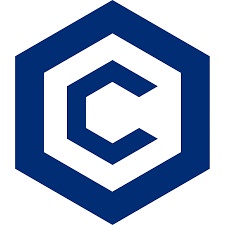In the ever-evolving landscape of blockchain technology, interoperability and scalability have emerged as critical challenges. Cronos, a project built on the Ethereum Virtual Machine (EVM), aims to address these challenges by providing a bridge between Ethereum and other blockchains. Central to the success of Cronos is the concept of Cronos nodes, which play a vital role in enabling cross-chain functionality and unlocking the potential of decentralized finance (DeFi) applications.
Understanding Cronos Nodes:
Cronos nodes are the fundamental building blocks that power the Cronos ecosystem. Similar to traditional blockchain nodes, Cronos nodes are software programs that connect to the network, validate transactions, and maintain the integrity of the blockchain. However, their significance goes beyond these basic functions.
At its core, Cronos is designed to be a two-way bridge that allows assets and data to flow seamlessly between Ethereum and other blockchains, including Cronos itself. This is where Cronos nodes come into play. These nodes facilitate the communication between different blockchains, ensuring that transactions and information can be securely transferred from one network to another.
Types of Cronos Nodes:
Full Nodes: Just like in other blockchain networks, full nodes in the Cronos ecosystem store the entire blockchain’s history and state. They validate transactions, execute smart contracts, and contribute to consensus. These nodes are the backbone of the network, maintaining its security and decentralization.
Relay Nodes: Relay nodes serve as intermediaries between different blockchains. They play a crucial role in facilitating cross-chain communication by relaying transactions and data between Ethereum and Cronos. These nodes help ensure the seamless interoperability that Cronos aims to achieve.
Validator Nodes: Validator nodes participate in the consensus mechanism of the Cronos blockchain. They validate and confirm transactions, contributing to the overall security and stability of the network.
Unlocking DeFi’s Potential:
Cronos nodes hold the key to unlocking the potential of decentralized finance on a cross-chain level. DeFi applications built on Ethereum can now seamlessly extend their reach to the Cronos ecosystem, allowing users to interact with these applications using assets from both networks. This interconnectivity opens up new avenues for liquidity, innovation, and collaboration in the DeFi space.
Imagine a user being able to utilize their Ethereum-based assets on a Cronos-based DeFi platform without the need for complicated bridges or conversions. Cronos nodes make this possible by enabling the secure transfer of assets and data across blockchains. This integration could lead to a more inclusive and expansive DeFi landscape, benefiting both developers and users alike.
Challenges and Future Development:
Running Cronos nodes comes with its set of challenges. Interoperability and cross-chain communication require a robust infrastructure and a deep understanding of both Ethereum and Cronos protocols. Ensuring the security and reliability of these nodes is paramount to maintaining the integrity of the entire ecosystem.
As the Cronos project evolves, its community of developers and stakeholders are actively working to enhance the performance, scalability, and usability of Cronos nodes. By addressing these challenges, the Cronos ecosystem aims to provide a seamless and efficient experience for users and developers navigating the cross-chain landscape.
In Conclusion:
Cronos nodes are the linchpin of the Cronos ecosystem, enabling the cross-chain functionality that holds the potential to revolutionize the DeFi space. By bridging the gap between Ethereum and other blockchains, Cronos nodes empower developers to create innovative applications that can leverage the strengths of multiple networks. As blockchain technology continues to evolve, the role of Cronos nodes in driving interoperability and scalability will undoubtedly remain at the forefront of this transformation.


No comments yet